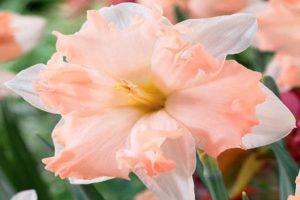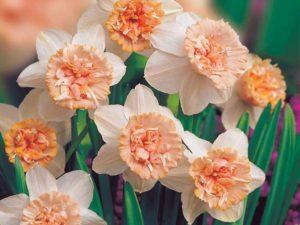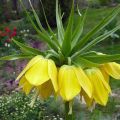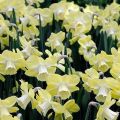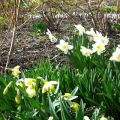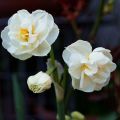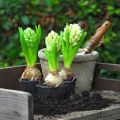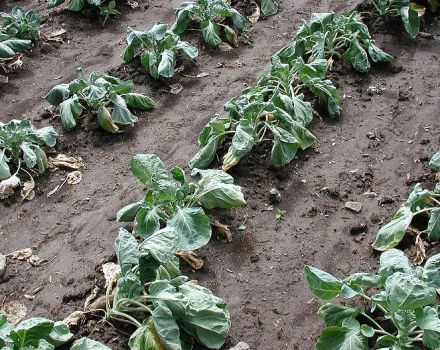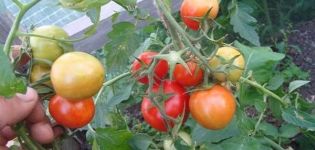Description of daffodil varieties Abba, planting and care rules
The Abba daffodil is an unpretentious bulbous plant that is very popular among gardeners around the world. Abba, like other representatives of this culture, has a beautiful appearance and a pleasant, alluring aroma. Let's see what advantages this variety has over other daffodils, as well as what conditions are considered favorable for growing it.
Description and characteristics of the daffodil Abba
Abba is a multi-flowered bulbous plant with leafless stems and beautiful large leaves of varying widths. Its bulbs are dense, medium in size, and the perianth looks like a tubular funnel.
The formed flower has the following characteristics:
- the height ranges from 35 to 40 centimeters;
- the diameter of one flower, in most cases, does not exceed 7 centimeters;
- up to 5 flowers can be located on one peduncle;
- the petals of the plant are snow-white with a bright yellow crown.
Note! Abba belongs to the early flowering varieties of daffodil, which should be taken into account when planting on the site.
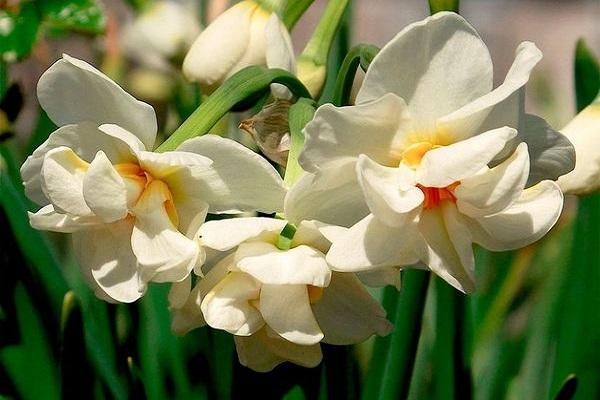
Main positive and negative aspects
Experienced gardeners, who have been growing Abba daffodils on their site for several years, note the following positive aspects:
- strong, tart aroma, pleasantly spreading a long distance from the planting site;
- pleasant appearance;
- strong immunity, thanks to which there is no need to worry about the safety of culture;
- unpretentiousness to the surrounding conditions;
- the flowering period is long, which distinguishes the narcissus from other ornamental plants grown in the garden.

The nuances of growing flowers
Despite the unpretentiousness of daffodils, their cultivation requires compliance with some nuances. If this is not done, the plant will grow weak or die. During planting, pay attention to:
- correct landing dates;
- choosing a place for a flower bed;
- preparation of planting material;
- the sequence of actions carried out when planting daffodils in the ground.
If you follow the basic rules, your flower bed will delight others with a beautiful appearance and no less impressive aroma.
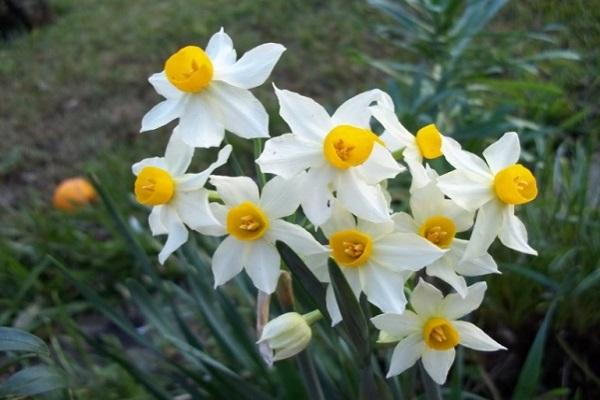
Boarding time
The optimal planting time for daffodils begins in early August and ends in the last days of September. More exact dates depend on your region of residence and the characteristics of the local climate.
So, for example, for residents of Central Russia, the optimal landing time will be the second half of September. The bulbs planted in the ground during this interval will have time to get stronger and take root. The plant will calmly survive the winter and will produce wonderful shoots in the spring.
Seat selection
There should be no problems with the choice of a place for planting daffodils, since this culture is unpretentious to such things.

Narcissus Abba grows equally well in both sunny and shady areas. However, there are a couple of interesting points to keep in mind:
- in shaded areas, the flowering period is much shorter;
- the flowers formed by the plant in a shaded area are smaller than in a well-lit area.
Note! In shaded areas, the flowering period does not exceed 2 weeks.
With good illumination of the flower bed, the duration of flowering can be increased to 1 month.
Preparation of planting material
The algorithm for preparing planting material is as follows:
- bulbs that are supposed to be used for planting are inspected for damage and deterioration;
- healthy, strong specimens are deposited separately, after which they are placed in a solution of potassium permanganate;
- if there is no potassium permanganate, then it can be replaced with a Whist checker. To do this, we put the bulbs in a separate bag, after which we fill it with a small amount of smoke emitted by the saber. It is not necessary to use the entire checker for this. You can crush a small piece and set it on fire at the tip of a knife.
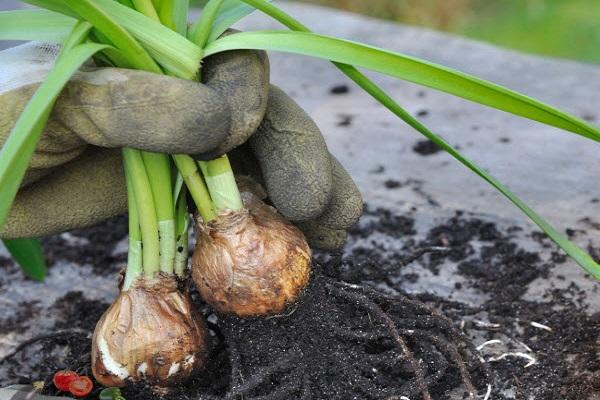
Landing
Planting a daffodil should not cause any problems for gardeners, since all actions are simple and understandable even for a beginner:
- the depth of the fossa should be 3 times greater than the planting material;
- the distance between landings should not be less than 15 centimeters;
- there should be a gap of 7 to 10 centimeters between the rows;
- it is recommended to sprinkle a small layer of sand at the bottom of the fossa, then slightly press the bulb into it, lowering it bottom down;
- then the hole is covered with soil mixed with mineral fertilizers.
If planting was carried out in dry weather, water the soil abundantly.
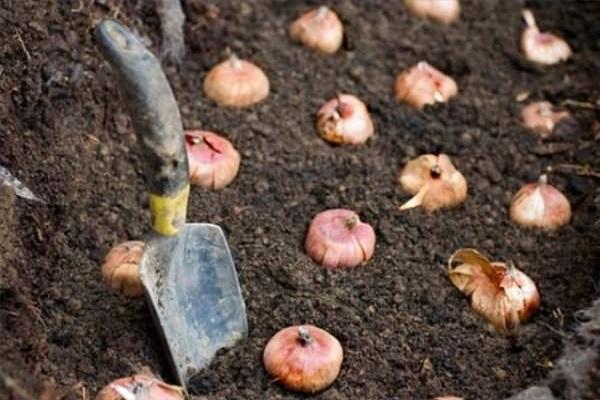
Further care of the culture
Further care of the culture consists in:
- correct, timely watering;
- mulching and loosening the soil;
- pruning daffodil and preparing the flower bed for wintering.
Watering and fertilizing rules
When growing daffodils, there are no specific watering schedules to follow. Plantings are watered as the soil dries up. Do not overfill the flower bed, as this will adversely affect plant growth. On rainy days, the flower beds are covered with waterproof material. This will prevent the bulbs from rotting. After watering, the soil is loosened to allow air to pass through better.
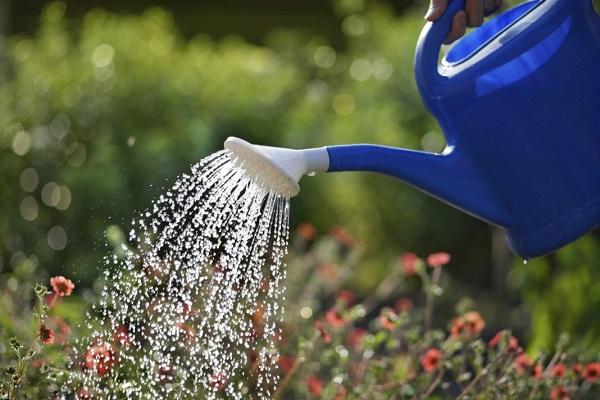
Mulching and loosening
Mulching is necessary to protect plantings from severe frosts. As a mulching layer, use:
- straw;
- sawdust;
- peat;
- wood ash;
- dry leaves;
The thickness of the layer ranges from 10 to 15 centimeters. Loosens the soil as needed, most often after abundant irrigation.
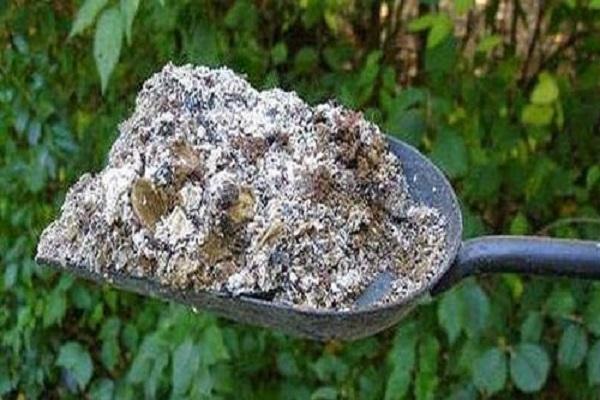
Pruning and wintering
Cropping is done as follows:
- waiting for the leaves of the daffodil to bloom and wither;
- we cut them with garden shears to the middle of the height.
It is advisable to trim Abba one level at a time. It is not recommended to tie the leaves after this, as they begin to be less ventilated and illuminated. In regions with harsh winters, daffodils require additional shelter, otherwise the bulbs and roots will freeze.
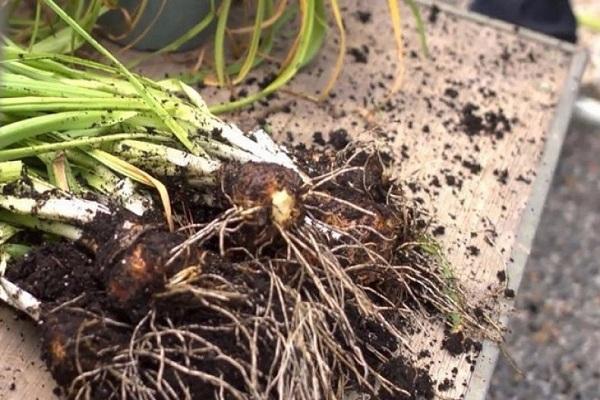
Disease and pest control methods
The culture is well protected from various kinds of parasites and viruses, but sometimes it does not cope and starts to get sick. Typical diseases are:
- fusarium;
- rot;
- viral diseases.
Among the pests are:
- onion fly;
- nematode;
- root mites.
Preventive measures:
- before the beginning of the formation of buds, it is recommended to spray the plant with special preparations against insects;
- after flowering, the flower bed is treated with a solution of copper sulfate.

Breeding methods
When a plant is propagated, two main methods are used:
- seminal;
- vegetative.
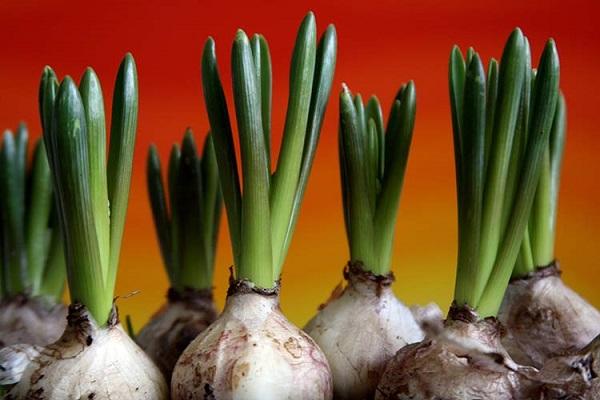
The use of terry daffodil in landscape design
In landscape design, daffodils are used as landscape compositions, which are divided into separate groups of 5-6 plants. They try not to plant them in large groups, since the terrain from this can acquire a slightly unkempt appearance. Looks good between plantings of perennial crops such as:
- geranium;
- host;
- cuffs.
